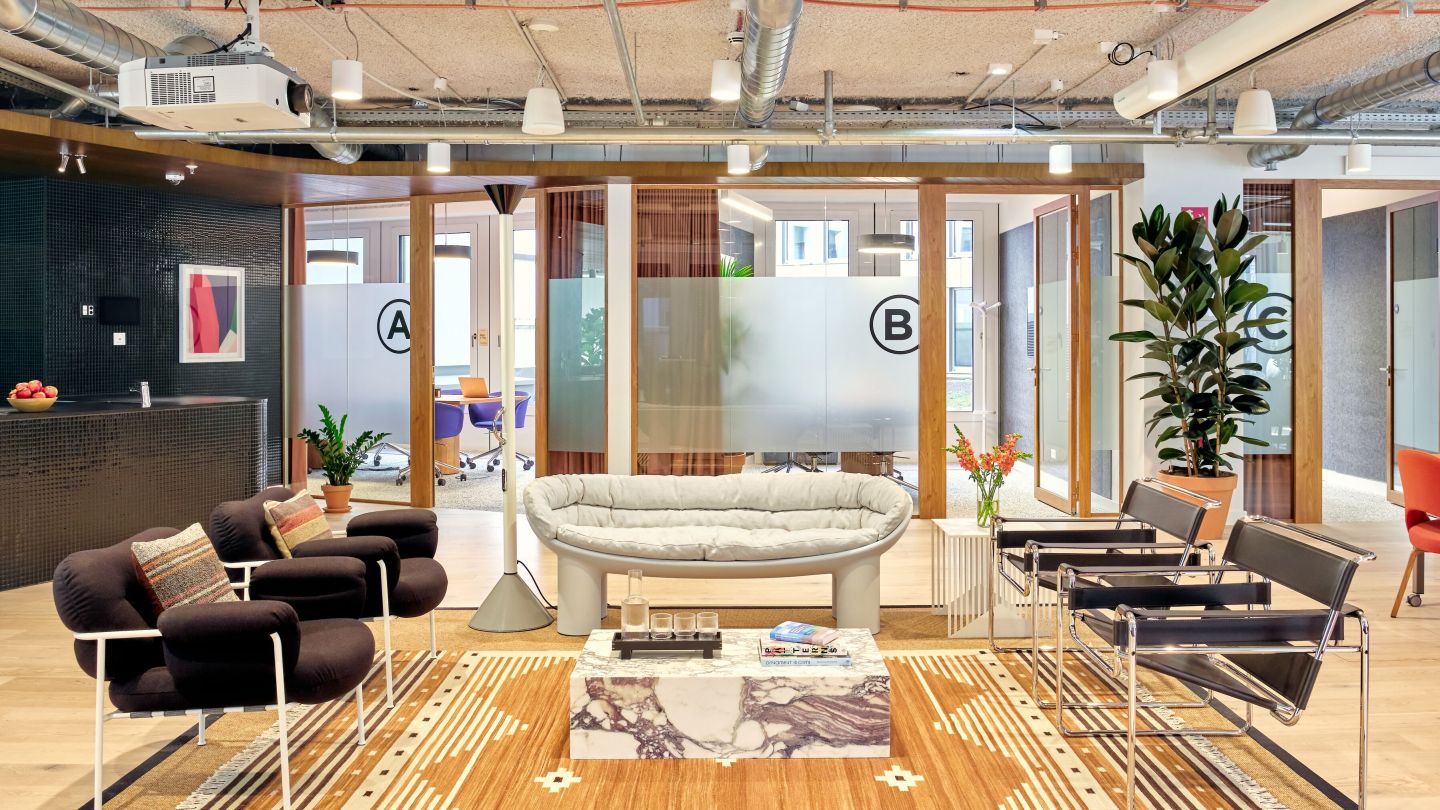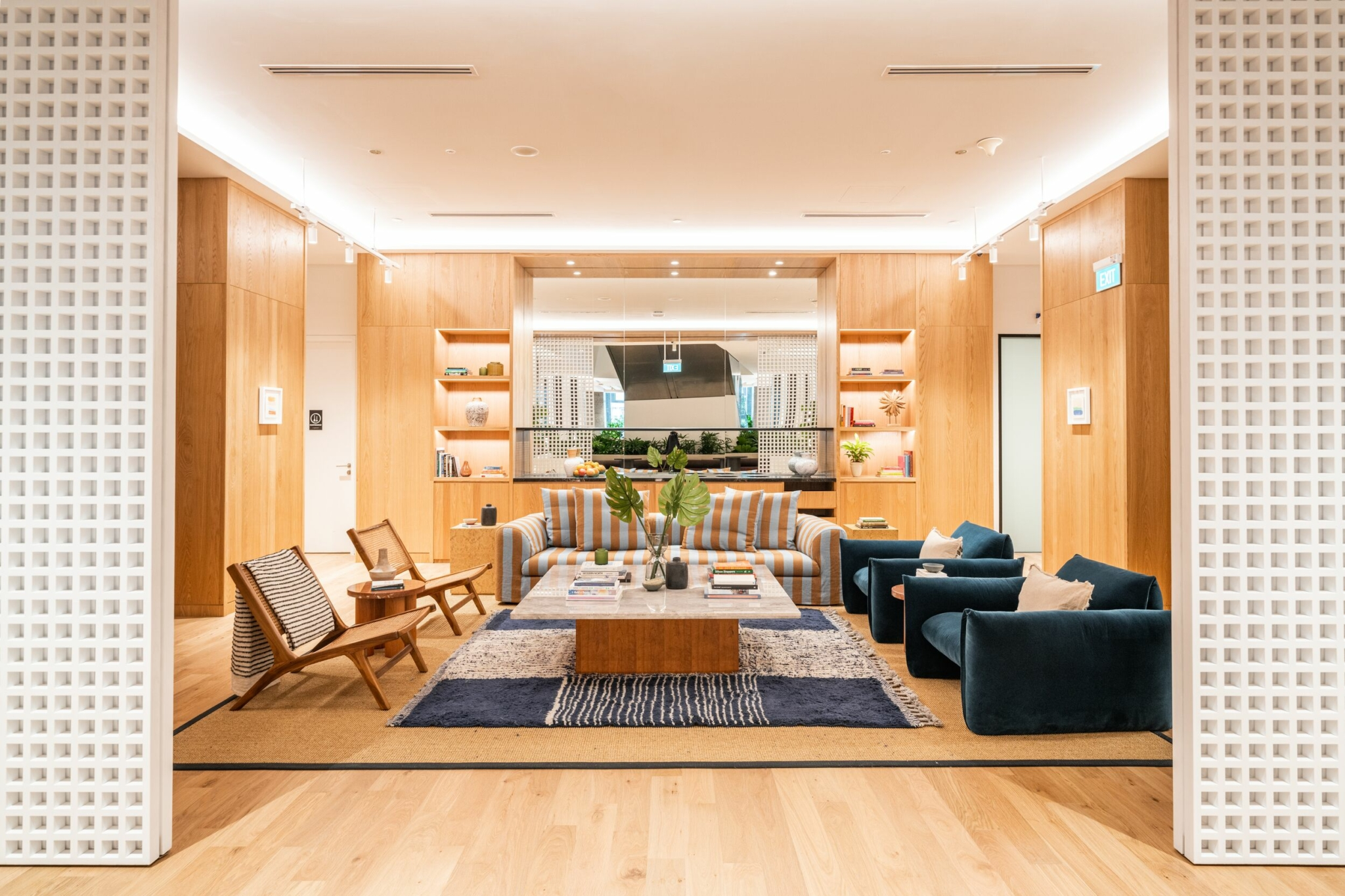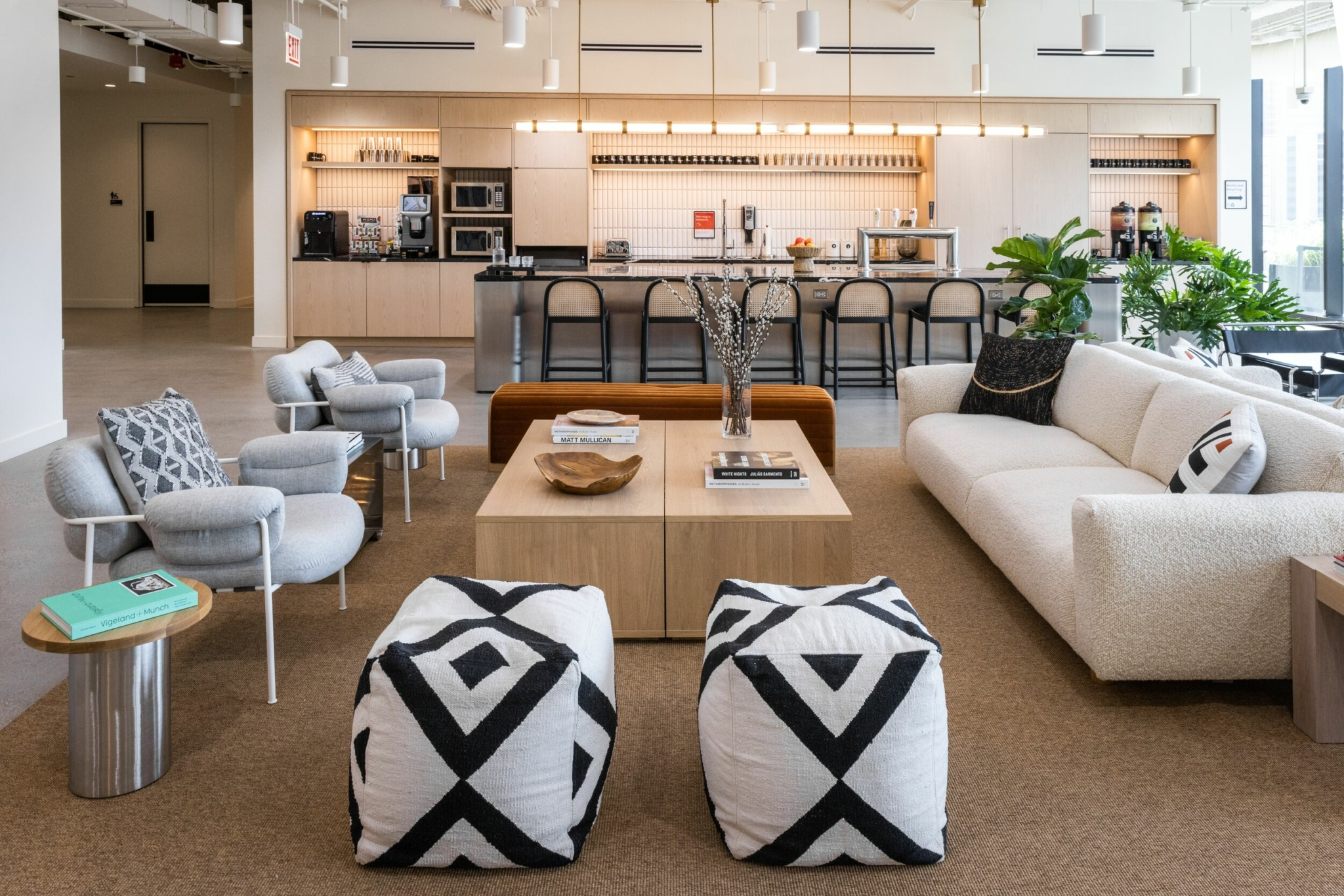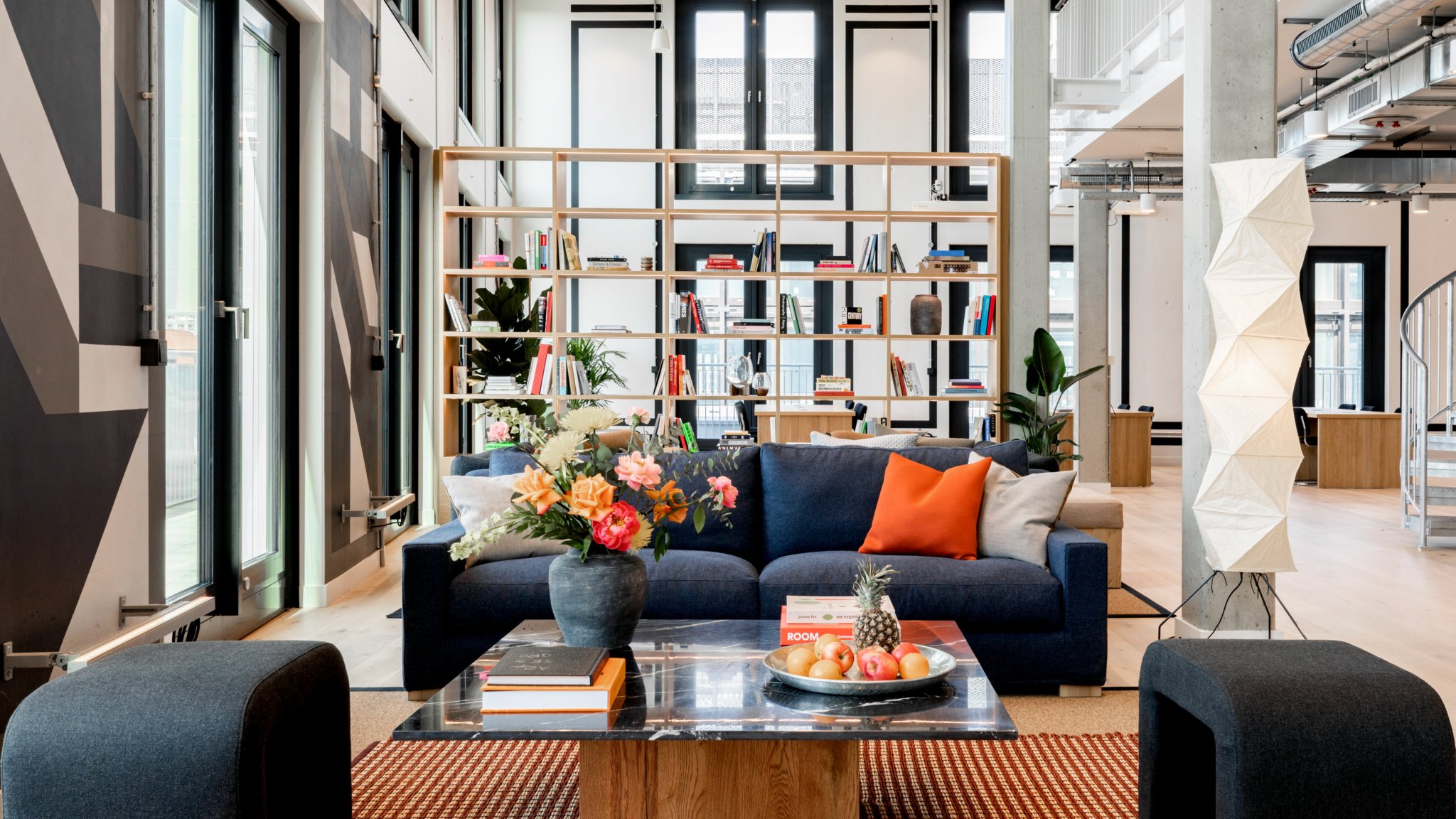Every WeWork space is intentionally designed to foster productivity and collaboration. Designed to Inspire delves into the architectural and artistic elements of these spectacular buildings.
As one of Germany’s cultural nerve centers, Cologne is a city of both visual and ideological contrasts. At the core of the city is one of Europe’s most beautifully preserved Gothic cathedrals. Yet outside the surrounding labyrinth of cobblestone streets and historic buildings, visitors will find impressive works of modernist architecture to match a local populace with a forward-thinking outlook.
“Cologne offers this juxtaposition of past and future,” says Charlotte Torck, senior lead architect at WeWork. WeWork Wallarkaden perfectly embodies this contrast, residing in one of the city’s buzziest new developments and sitting beside the Hahnentorburg, which served as the gateway to the city for centuries. “At the top, we have a terrace with views right into the heart of the medieval city center,” Torck adds.
The building was designed by renowned British design firm Caruso St John Architects. While being stunningly contemporary, it also manages to speak to the older architecture—and offers sweeping terrace views of Cologne.
“It’s a building with stature and grandeur,” Torck says. “What’s very characteristic is this strict and regimented gray brick facade, which is designed to complement the walls of the adjacent city gate monument.”

An intentionally repetitive pattern of windows and masonry piers helps further accentuate the architectural language of the building. “It’s a very striking building from the outside,” Torck says. “And from the inside, it creates this nice rhythm of windows that allows a lot of natural light to come in.”
Mateo Pardo, interior design manager at WeWork, wanted the interior of the space to be in conversation with the exterior. In order to echo those repetitions, he created a seating plan on the main management floor that alternates banquettes, rattan chairs, and cozy nodes, along with screens to help break up the space. “[The] screens give a sense of intimacy,” Pardo says. “We were trying to avoid an unbroken line of chairs and tables, which can feel overwhelming.”
We wanted something that looks into the past but also toward the future.
Mateo Pardo, interior design manager at WeWork
Pardo also introduced spatial variety and intimacy by layering lighting. “What we wanted to avoid was a supermarket effect where the whole space is washed in continuous light,” he explains. “With layered lighting, by highlighting specific areas with warmer light or pendant lamps, it feels like being in a nice restaurant.”
Throughout the space, ceiling cove lights help create focal points where members organically gather, while the immense windows flood other spaces in sunlight. Having such an abundance of natural light to work with, Pardo says, was a gift to the design team. “To have so much glass facade to play with is really exceptional in a European building.”
While all members can enjoy the benefits of those floor-to-ceiling windows incorporated into the facade, all that natural light is especially noticeable in the office spaces. “Because of these floor-to-ceiling windows, all these offices have these incredible [views] and feeling of openness where you can see out to the tree-lined streets,” Torck says. As an added bonus, each of the private suites has access to a dedicated terrace that offers a stunning panorama of the medieval city.
“You really feel like the boundary between inside and out is nearly blurred,” she says. “In the lower floors, it almost feels like you’re in a forest, and the farther up you go, the more you get those views.”
Because the space feels inherently airy and bright, the designers felt free to get creative with the materiality of the interior. They opted for funky, stylish furnishings that would look right at home in a Stanley Kubrick film from the 1970s.
“When we did the concept, we called it ‘current-retro future,’” Pardo says. “We wanted something that looks into the past but also toward the future. Distinctive but not gimmicky.”
For much of the space, he opted for a rich, neutral palette of browns and grays. “We have gone for a very warm atmosphere,” Pardo says. “We wanted to create a sense of intimacy, so that members will want to stay. To achieve that, he relied heavily on woods, including dark timber and stained oak, as well as textured rugs and fabrics—always making sure that no single facet of the design overpowered the others.
“If everything is warm, it can feel quite heavy, almost like a cabin in the mountains,” Pardo says. “You need a balance between warm and cold. So you have stainless steel fixtures, and then the timber, and then you have this beautiful marble.” The marble has swirls of warm tones that intertwine with its cooler background, providing a surface that appears different as the lighting in the space changes throughout the day.
In select spaces, Pardo leaned into a particularly sleek, contemporary aesthetic. For the community bar, the design team incorporated stainless steel furnishings on top of a series of black features layered on top of one another. “We’re working with one color in places, but with varying textures in a way that’s quite sophisticated,” he says. He took a similar approach with the pantry to make this gathering point shine. “In the pantry, we put this enormous mirror at the backsplash, and it looks incredible.”
The original artworks commissioned and purchased for the interior are unique to this WeWork location, and they reflect perfectly both the modern and historic influences of the building and its neighborhood. “The custom art collection proposed for this project is also very much influenced by the interiors and the concept of modernist design juxtaposed with characters of futurism,” says Loren Stuart, art and graphics manager at WeWork.
WeWork Wallarkaden is a workplace tailor-made for the specific needs of its members, with thoughtful extra touches ranging from lockers for on-site storage to phone booths to acoustically protected quiet spaces for highly focused work. The overall result is an of-the-moment space that nods to its historic surroundings, embodying the best of what makes Cologne such a compelling city.
Diana Hubbell has spent more than a decade covering design, art, travel, and culture for publications including The Washington Post, The Guardian, Eater, Condé Nast Traveler, The Independent, VICE, Travel + Leisure, Architectural Digest, Atlas Obscura, and WIRED, among others.
Want to learn more about flexible work?
















